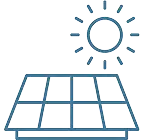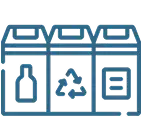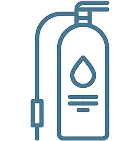The Modulaire ESGS strategy is our commitment to act on our ESGS impacts and communicates our policy position, objectives and actions uniformly across the Group. It is informed by our stakeholder engagement process and addresses key material topics and impacts from our double materiality assessment.
Modulaire ESGS Report 2024
ESGS strategy and objectives
Our ESGS strategy features circularity, adaptability and leasing at its core. It sets out ambitious ESGS objectives and absolute reduction targets (KPIs), including our commitment to Net Zero emissions by 2050. Central to delivery, is our circular business strategy model - Loops within Loops. It is designed to ensure our raw materials remain in use for as long as possible at their highest value (page 6). We share our ESGS progress publicly in this annual report.
c.73%
c.73% less carbon emissions vs traditional construction1.
Our circular business model delivers modular builds with a lower carbon footprint than traditional construction.
20x
Units can be reused up to 20x or more during their average lifecycle1.
Our units provide flexibility, because they are reconfigurable and reusable, they are helping customers adapt to changing climate demands and shifting demographics.
96%
Units are up to 96% recyclable1.
By leasing out assets, they remain under our control for their full lifecycle, enabling us to minimise their impacts and manage their recycling.
- 2020 Product footprint analysis of a typical Modulaire unit based on:
- Stage A1-A5 (sourcing, manufacturing and transporting to site) approximately 200 (kgCO2e/m2) v 700-800 (kgCO2e/m2) for a traditional build. This equates to approximately 73% less carbon emissions compared to a traditional build.
- In use (B1-B6) and end of life (C1-C4) emissions total 210 kgCO2e/m2.
- This equates to approximately 65% less carbon emissions compared to a traditional build
- For the whole life footprint (410 kgCO2e/m2), details for an equivalent traditional build are difficult to ascertain due to the lack of benchmarks which include B6 data
- Product footprint calculated in accordance with EN 15978:2011. Modulaire typical unit based on Advance 8000 two classroom unit assembled in France. Typical benchmarks for education buildings based on Whole Life-Cycle Carbon Assessments Guidance (Mayor of London, October 2020). Whole life figure provided in this guidance exclude any allowance for energy consumed during the in-use phase
Target Net Zero by 2050 using our Loops within Loops model
- Be part of the circular economy by leasing, redeploying and end of life reuse
- Drive sustainable design and manufacturing
- Act on climate-related risks and opportunities
Measure and deliver social value
- Place safety at the top of our agenda, supported by wellbeing programmes and training
- Create smart places for people to work, learn and live
- Ensure diversity and inclusion remain key values in every aspect of our business
Continuously improve governance
- Maintain our strong compliance focus around: ethics, anti-bribery and corruption, suppliers, data protection, cybersecurity and speaking up
- Active oversight by the Board and Executive Committee of ESGS
- Achieve best practice EMS certification
Global frameworks and standards
We are delivering for social good, contributing to the global community and taking action on climate change. We align our ESGS strategy with a number of best practice frameworks and standards, including the United Nations Sustainable Development Goals, the United Nations Global Compact Principles and the Task Force on Climate-related Financial Disclosures. We do this so our investors, customers, suppliers and society at large can understand our approach to sustainability and assess our progress. We communicate our ESGS performance transparently through these external organisations, on our website and in this report.

“Standards and frameworks offer a structured approach and guidance for all our ESGS topics. Their interoperability helps mitigate risk and highlights opportunities. Working on their delivery across the business has equipped me with valuable knowledge and skills to inform stakeholders effectively.”
Auriel Franklin, Group ESGS Intern
We act on six UN SDGs that complement our business purpose, vision and operations. We have integrated the goals into our everyday activities through our services, projects and customer portfolio.
To achieve long-term success, we are transitioning to a sustainability strategy with circularity at its core, providing modular space for people to work, learn and live.
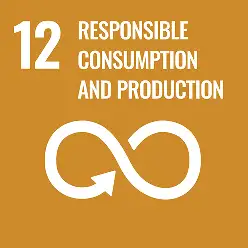
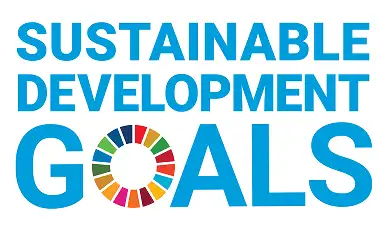
We work in collaboration with our stakeholders to create and develop shared value for people and the planet. We create products that make a positive difference to society while contributing to our ongoing success.
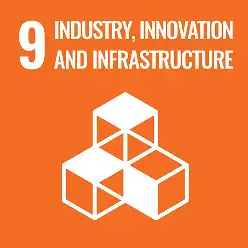

We conduct business with a focus on ethical, environmental and community goals, whilst being a good employer and fostering a diverse and inclusive culture.
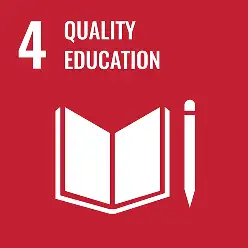
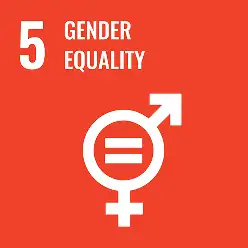
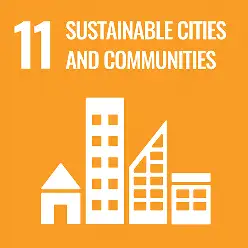
We became signatories to the UNGC in April 2021. We report annually on our progress against its ten Principles through a Communication on Progress report.

A number of our SBUs are participating in the independent sustainability rating system, EcoVadis. It makes an independent assessment of our ESG performance in four key areas: Environment, Ethics, Labour & Human Rights, and Sustainable Procurement.
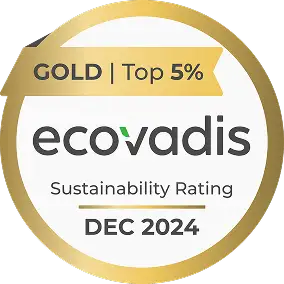
We became signatories to TCFD in May 2021 and based our roadmap to Net Zero on their recommendations. We share our progress in this report, a non-financial declaration that combines aspects and reporting on key issues including: stakeholder concerns in the materiality matrix, environmental, social and governance factors, including business ethics and compliance, anti-corruption and bribery.

Modulaire became a signatory to SBTi in January 2023 and has committed to using SBTi criteria when setting our absolute CO2e reduction targets, including for Scope 3. We have submitted our science-based targets to SBTi for validation.
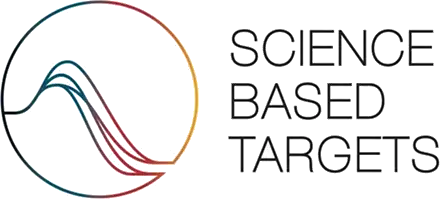
Our approach to social value
Social Value is the contribution that an organisation makes to society by delivering economic prosperity, social good and environmental responsibility. It forms a part of our Loops within Loops business strategy and can be measured by proxy or actuals, through quantitative and qualitative approaches (page 34).
At Modulaire, we are in the process of listening, engaging and collaborating with our stakeholders to learn more about the social value our activities can deliver. Our key social focus areas are to deliver modular solutions by providing smart spaces that benefit the communities where we operate, to provide a safe and healthy working environment for our employees worldwide, and to foster a diverse and inclusive culture.
We amplify our social value by aligning our actions with those of international change-makers like the United Nations Sustainable Development Goals and the United Nations Global Compact. By doing so, we can make a positive contribution to the social infrastructure meeting society’s changing needs.
Net Zero: our pathway and progress
2023
ACHIEVED
- Low Carbon Solutions
- 5% absolute reduction in Scope 1 and 2 emissions (vs 2020)
- Source 100% Renewable Energy for the Group where available and applicable
- Initiate Group Operational Carbon baseline tonnes of annual Scope 3 for 2022
2024
ACHIEVED
- 7.5% absolute reduction in Scope 1 and 2 emissions (vs 2020)
- Roll out our strategy to reduce or mitigate Scope 3 emissions
- Continuous innovation of low carbon solutions for customers
2025
IN PROGRESS
- 10% absolute reduction in Scope 1 and 2 emissions (vs 2020)
- Reduce the embedded carbon footprint (Stage A1-A5) of a typical Modular Space Unit (vs 2020)*
- Reduce waste to landfill by 50% per typical unit (vs 2020)
- Reduce our water use by 10% per typical unit (vs 2020)
- Life Cycle Analysis of typical manufactured Modular Space Units
2028
- Sustainability-Linked Finance
- 15.8% reduction in Scope 1 and 2 emissions (vs 2020)
2030
- Innovation & Scale
- Reduce Scope 1 & 2 GHG emissions by 55.5%
- Reduce Scope 3 emissions by 25%
- Progress towards total circularity of units
- Technology for carbon removal
- 100% renewable energy where available and applicable
- Transform new product portfolio to Net Zero carbon
2050
Net Zero
Net Zero carbon of our end-to-end supply chain by 2050 to meet the Paris Agreement goal of 1.5°C.
Our commitment for environmental responsibility and climate action is to minimise carbon emissions for our company and customers and manage our material risks and opportunities.

Innovating value added products
Our Value Added Products team develop the sustainable low carbon products and services our customers want and need in a circular economy. Our quality management system assures safety across our product range. In 2024, we have continued to integrate smart and sustainable technologies that add value; including our Building Technical Management system (see right), Hydrogen generator which offers an alternative energy source to diesel, CO2 reduction calculators, real-time energy consumption testing to help customers with their decision-making, and recycling bins to encourage reuse.
We have launched specialist solutions in the railway sector (page 21), such as autonomous modular toilets which do not require water or waste connections. Our new Digital Guardians are providing security support for remote areas with cameras, microphones, loudspeakers and smoke fog. We introduced a new patented solar over-roof solution which can be adapted for every type of modular container. It meets customer demand for a fast installation, minimal business interruption, safe access and more energy from solar panels. We are also using our sustainable design skills and experience to help government meet growing demand for quality affordable social housing. Our modern construction methods are winning praise and repeat business.

“Our value added products are well received because they’re designed from the get-go as low carbon customer solutions. We’re innovating right now for new sectors and expanding our range.”
Sébastien Denis, Group 360 Marketing & Innovation Manager
Sustainable product portfolio
Our sustainable product portfolio is central to the implementation of our Loops in Loops Strategy, driving sustainability across our operations. Its expansion is powered by research and development-based innovation, ensuring continuous improvement and adaptability. We focus on developing products that contribute to the Sustainable Development Goals, circular economy principles, and a low-carbon future, reinforcing our commitment to responsible growth. For our clients, this translates into access to cutting-edge, low carbon solutions that align with global sustainability standards, helping them achieve their environmental and business objectives.

“Our approach has the potential to support clients in managing their emissions footprint.”
Kristian Grimsbo, Marketing & ESG Director, Nordics
Impacts, Risks, and Opportunities
Type
Sustainable solutions
IRO
Positive
Strategy
ESGS
Policy
Design guidelines
ESGS Policy
Action
Increasing the resource efficiency, recyclability of our materials; market design for circular products
Target
25% reduction Scope 3 by 2030
Sustainability assessment of products
- Evaluate existing and new products with a focus on sustainability.
- Align the product portfolio with circular economy Net Zero goals.
- Benefits for clients: ensures products meet high sustainability standards, providing confidence in their environmental impact.
Loops within Loops
- Offers low carbon products aligned with circular economy principles.
- Based on alternative low carbon raw materials, energy sources and recycling.
- Target at least 25% recycled or alternative materials.
- Benefits for clients: reduced carbon footprint and support for circular economy initiatives, enhancing their sustainability credentials.
Approach
Identify changes in market, innovation, and regulatory environments.
- Integrate into product portfolio decisions and corporate governance.
- Pilot test internally with external expert review.
- Focus on AI and digitalisation.
- Benefits for Clients: Proactive adaptation to market trends and regulatory requirements, ensuring reliable and compliant product offerings.
Product Stewardship & Safety
- Certification and LCA approach.
- Integrated into Quality, Safety, Health, and Environment management systems for compliance with standards.
- Benefits for Clients: assurance of product safety and compliance, reducing risks and enhancing brand reputation.
Designing low carbon customer solutions
Railway sector solutions
Altempo are railway sector specialists and continue to innovate new solutions for the industry, including their first of its kind patented autonomous toilets. The toilets do not require water or wastewater evacuation, being fully automated and use multiple sensors. They are being used for SNCF drivers on platforms where space is particularly constrained. In the newly opened Paris station in 2024, ahead of the Olympics, the Altempo team patented and supplied a new type of fencing to separate worksite and passenger areas. Later in the year, they also introduced a Digital Guardian solution that supports the construction of new train lines near Paris. It enables remote digital security with microphones, speakers, smoke fogs and lighting.
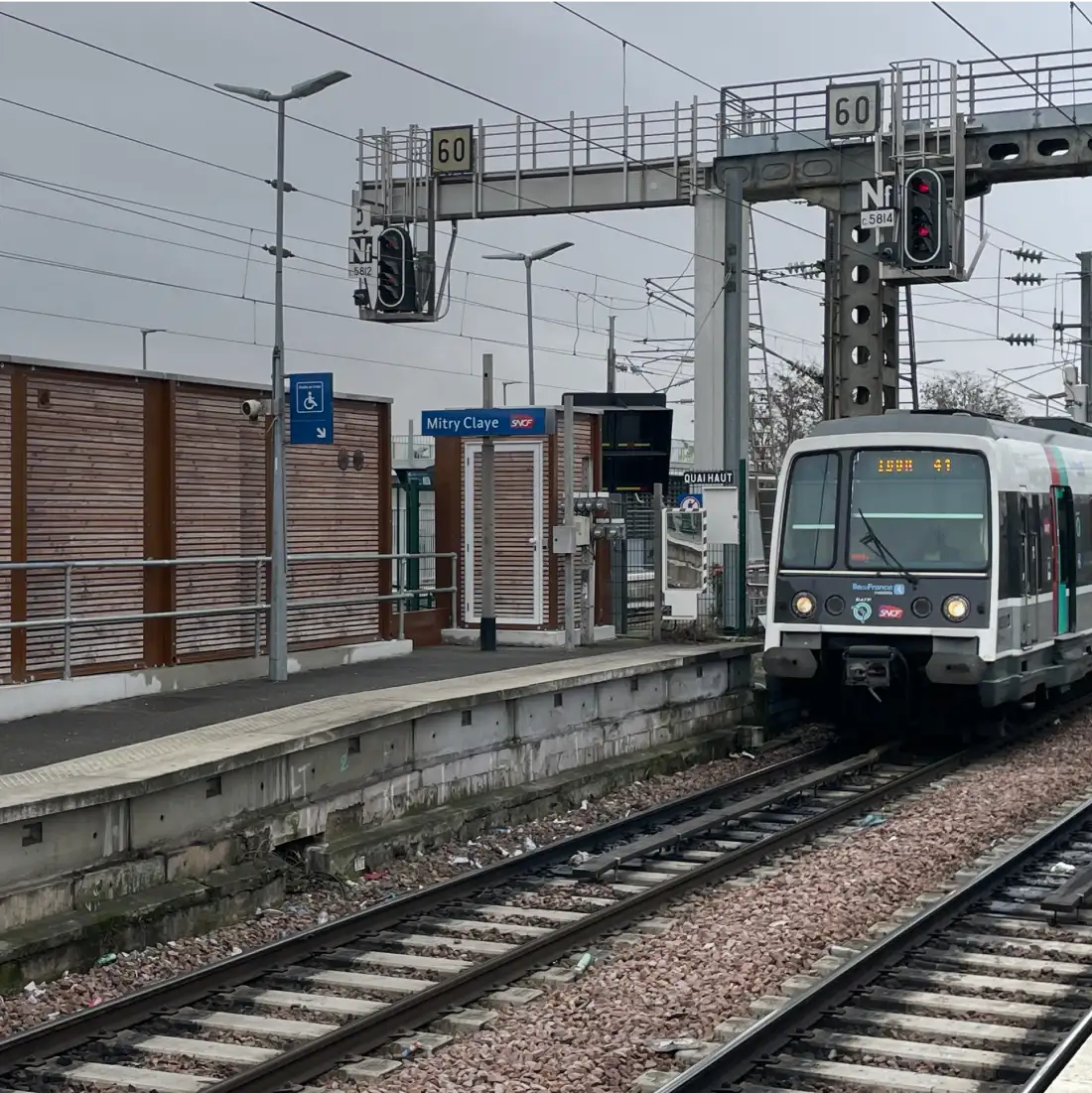
Design for social housing
Ausco Modular has introduced a new design of social housing for essential workers, as part of the Queensland Government’s MMC housing programme. Like many parts of Australia, the state is experiencing a housing crisis with a 22% increase in homelessness. Ausco’s design offers a fast and attractive solution that is built in Brisbane using our sustainable circular business model. Local materials such as timber cladding and battening help to reduce the unit’s carbon footprint and enable it to blend in with surroundings. Other features include indoor-outdoor living spaces to support health and wellbeing, with room layouts designed to deliver passive cooling and maximise cross-through ventilation. The design includes deep verandas, window hoods and uses light-coloured materials to prevent heat gain. Ausco has already manufactured, delivered, installed and handed over the first eight single-storey government employee houses, with more on the way in 2025.
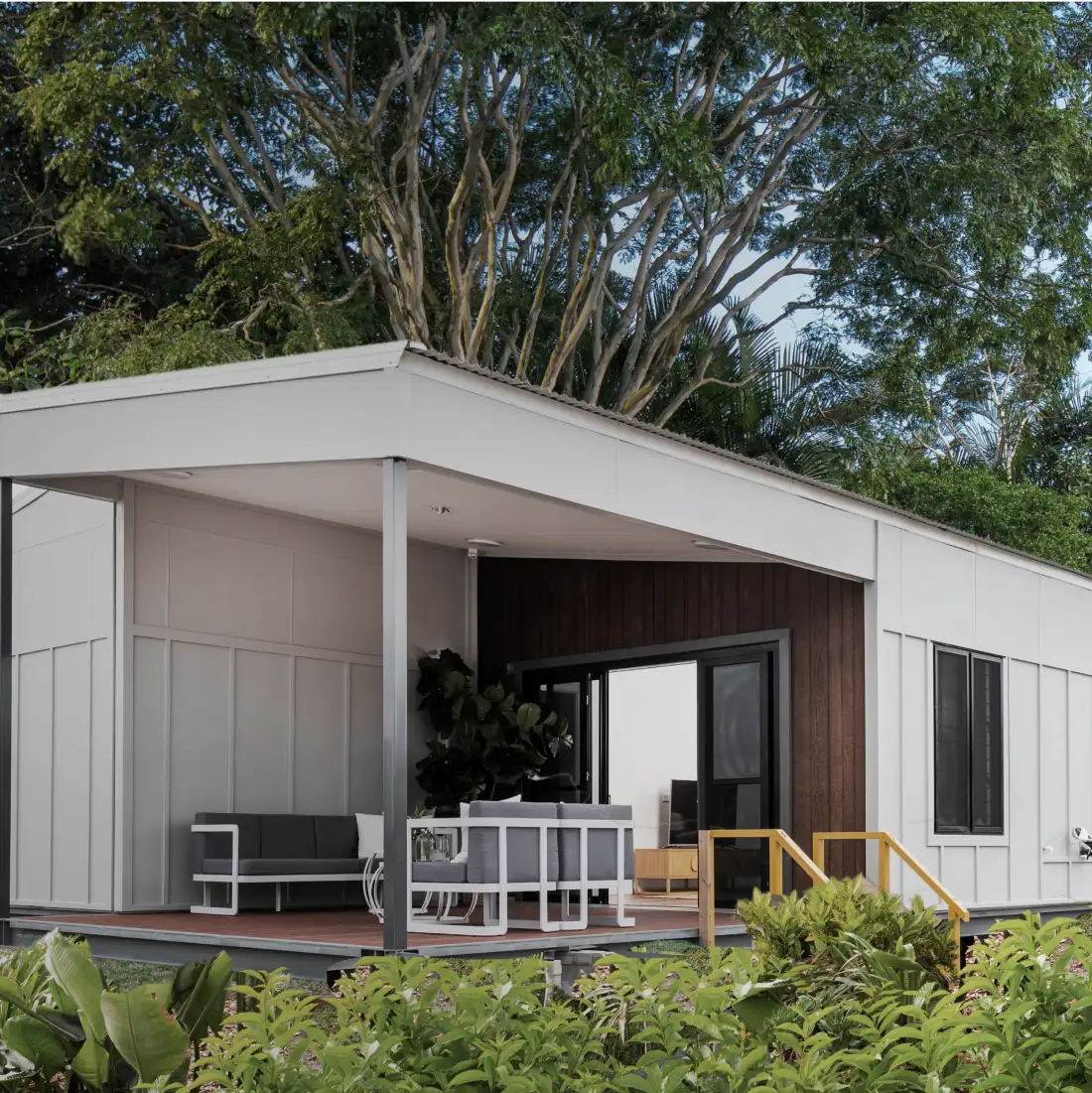
Solar over-roof patent
Guided by two issues, the need for increasing power from solar panels and the safety for maintaining solar power on module rooftops, Altempo designed and patented a new solar over-roof. It includes guardrails, solar canopies to maximise the power installed, and it can be adapted to every kind of modules and containers. The design enables customers to continue using roof surface for technical equipment such as air conditioning and is easy to maintain and remove. This year Altempo and Algeco France launched the new modular rooftop solution and recently demonstrated the ease of installation by commissioning over an active area of 130m² in less than one day including:
- 5 solar modules
- 65 PV panels
- 30kWp capacity



